
My Trusty T23 was great for enjoying Chichester Harbour at 4-5 knots, but going any further was a bit of a strain. Every time you let go of the wheel she would quickly veer off course. If there's more than one crewmember this isn't such a problem, but I tend to cruise alone and make long voyages so help was going to be needed from an autopilot.
Initially, I had to find the size of the steering cylinder to work out which autopilot kit I needed. At a pinch, the smallest one might have worked for my Trusty T23, but there was certainty with the next size up, so I ordered one.
Autopilots are usually called 'George', probably after their inventor George DeBeeson, and can be a better helm in a motorboat than any human, saving on fuel as well as general wear and tear; they also tend to make turns smoother.
Installing 'George'
The Raymarine box arrived and, having read the instructions, it was clear that this was a major installation. Preparation and not getting confused were key.
As the boat had two steering positions I also checked with the manufacturers of the hydraulic helms that additional check valves were unnecessary to stop George from turning one or other of the wheels instead of the rudder.
Starting at the bow seemed logical. The heading sensor had to be installed 1m away from anything that might be magnetic and where its LED light can be seen for fault finding.
The arrow on the unit must point forward in line or parallel to the centreline. It must also be 2m away from the radar beam and fitted to be level in all directions.
Under the forward bunk seemed the best place to fit the bracket (it can be flush mounted), but it would be difficult to get at the stringer I decided to use for the mounting and it wasn't vertical. I therefore, screwed a piece of marine plywood to the stringer so that the heading sensor stayed vertical.
This story is from the {{IssueName}} edition of {{MagazineName}}.
Start your 7-day Magzter GOLD free trial to access thousands of curated premium stories, and 9,000+ magazines and newspapers.
Already a subscriber ? Sign In
This story is from the {{IssueName}} edition of {{MagazineName}}.
Start your 7-day Magzter GOLD free trial to access thousands of curated premium stories, and 9,000+ magazines and newspapers.
Already a subscriber? Sign In

Orca sink yacht in Strait of Gibraltar
Spain's maritime rescue service, Salvamento Maritimo, has reported that a 15m (49ft) yacht sank in Moroccan waters in the Strait of Gibraltar following interaction with a pod of orca.

No kill cord or lifejackets were worn during fatal powerboat crash
A kill cord and lifejacket are useless unless worn-that's the warning from the Marine Accident Investigation Branch (MAIB), following its investigation into a powerboat crash that killed a 32-year-old woman and five-year-old girl on 2 October 2022.

Multihull sail work
Brush up on multihull sailing skills before heading off on charter with Gavin Le Sueur's guide to spinnaker handling, tacking and gybing

Five top causes of engine failure and how to prevent them
Jake Kavanagh talks to Sea Start marine engineer Nick Eales about how to avoid the five major causes of an engine breakdown at sea
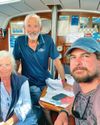
Sail the Atlantic with strangers
Would you sail across the Atlantic with someone you've just met? Ali Wood meets the cruising crews who've done just that

IZIBoat: simple sailing
Rupert Holmes sails an innovative catamaran design intended to widen participation in sailing among those with little time to get on the water in more conventional craft
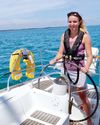
30 WAYS TO GET AFLOAT
From tall ships to small dinghies, you needn't own a boat to sail. Ali Wood looks at the options, and how skippers can also find crew
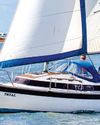
Boats for restoring under £20,000
Duncan Kent picks the best sub-35ft sail and power boats to look for when aiming to undertake a restoration on a budget
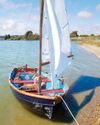
Seaworthy dinghies for less than £500
For low cost traditionally-styled GRP trailer-sailers, consider the Foreland and the Otter available at bargain basement prices
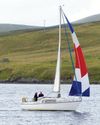
Playing with coloured sails
Maintaining an hourglass-shaped balloon and ratcheting up the log numbers